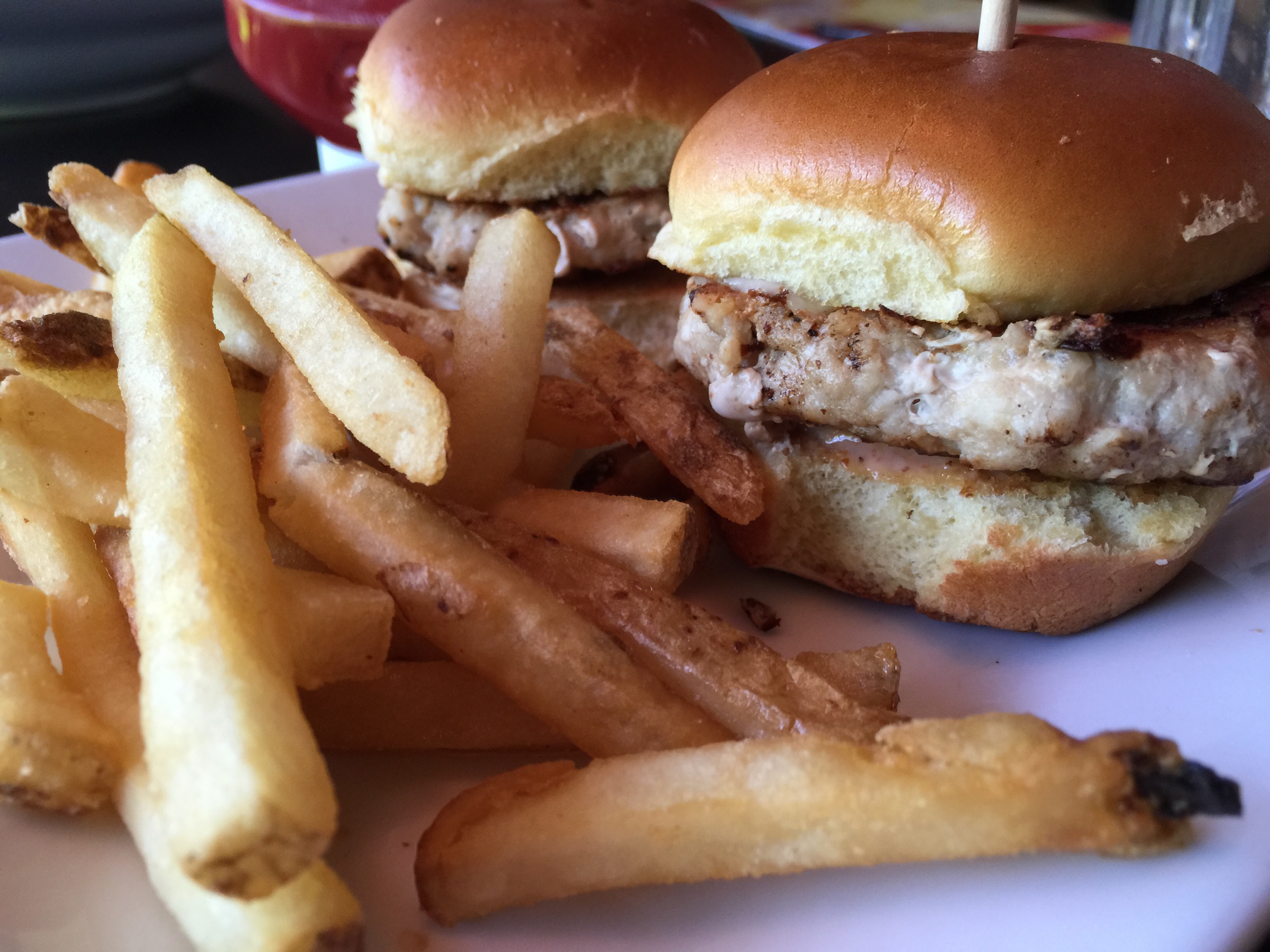
by EM2WL | Jun 4, 2015 | Binge Eating, Intuitive Eating, Nutrition, Videos
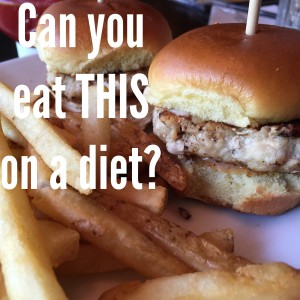 Do you alternate between “perfect” eating and stuffing your face? Not sure how you can ever accomplish your goals, when you don’t wanna give up your fave foods? Always feeling like it’s all or nothing (chicken breast and broccoli OR chicken fingers and cheesecake?)
Do you alternate between “perfect” eating and stuffing your face? Not sure how you can ever accomplish your goals, when you don’t wanna give up your fave foods? Always feeling like it’s all or nothing (chicken breast and broccoli OR chicken fingers and cheesecake?)
With the explosion of social media, and being able to (supposedly) see what everyone else is doing, thinking, and eating and drinking – it can sometimes cause conflicting thoughts. The virtual celebrity or fitness model you follow/admire seems to subsist on tilapia and asparagus, but those IRL (in-real-life) peeps at home are hollering for nachos and wings. You live in the real world, and sometimes life takes over and you find yourself falling headfirst into a box of Krispy Kreme. Part of you wishes you had the willpower of that fitness model, but the other half secretly screams “why can’t I just eat junk and lose weight?!”
We don’t feel that you should be forced to waste your tastebuds on (what you perceive as) mediocre-tasting foods, just for the sake of fat loss. But, be sure to call it both ways. There are just as many bad tasting junk foods as there are bland-tasting health foods. There are also total yum versions of both. If you really want to eat what you love, then DO it. An eating style that doesn’t includes foods you love is doomed to fail. BUT…make sure that you aren’t including your “default” foods (easiest, habitual, most convenient) in the list of things you don’t wanna give up. Especially if they aren’t even good TO you. Get back into the habit of actually tasting your food, and use your tastebuds as the measuring stick for what you “can’t do without.” There are plenty of more, nutrient dense, foods that can make better use of the cals your “so-so” foods are taking up. It’s perfectly legit to stop ordering the fries at your fave burger joint if the fries just don’t knock your socks off like the burger does. Eating fast food isn’t the end of the world, but step away from the combo meal mentality to see if you even WANT everything that you typically default to eating together.
My motto: “If I’m gonna eat, it’s gonna taste good. If I’m gonna ‘waste’ cals on ‘so-so,’ best believe it’s gonna be a macro powerhouse ‘so-so’ “
This way of thinking takes some being honest with ourselves, though. It’s so much easier to just claim not changing on “oh I just can’t…I like food too much…” or “I don’t wanna eat food that doesn’t taste good” – not realizing that often the stuff we are eating out of convenience isn’t all that great-tasting either. If it’s TRULY yum, eat it. If it’s not, why waste your taste buds on mediocre AND nutrition-less? Keep things you LOVE in your diet, and slowly work to swap out “meh” items for just-as-convenient, equal-or-better-tasting foods with higher protein and fiber. Even better, keep these items on hand for mindless munching moments, or to hold you over until you get to the meals/foods that make your heart melt. Matters of taste can’t always be changed, but matters of convenience…can. Sometimes we are just fighting the wrong battle.
While you may not be able to only eat junk and lose weight, you should be able to find a happy medium that includes a hefty amount of whatever floats your boat. Though it seems new-agey to say “be present” when you eat, it’s the first and biggest step to having more yum in your life. This video talks more about default eating and learning how to dissect your meals so that you can hit your goals while still eating the YUM foods you love.
SUBSCRIBE to our YouTube Channel for weekly info and motivation.
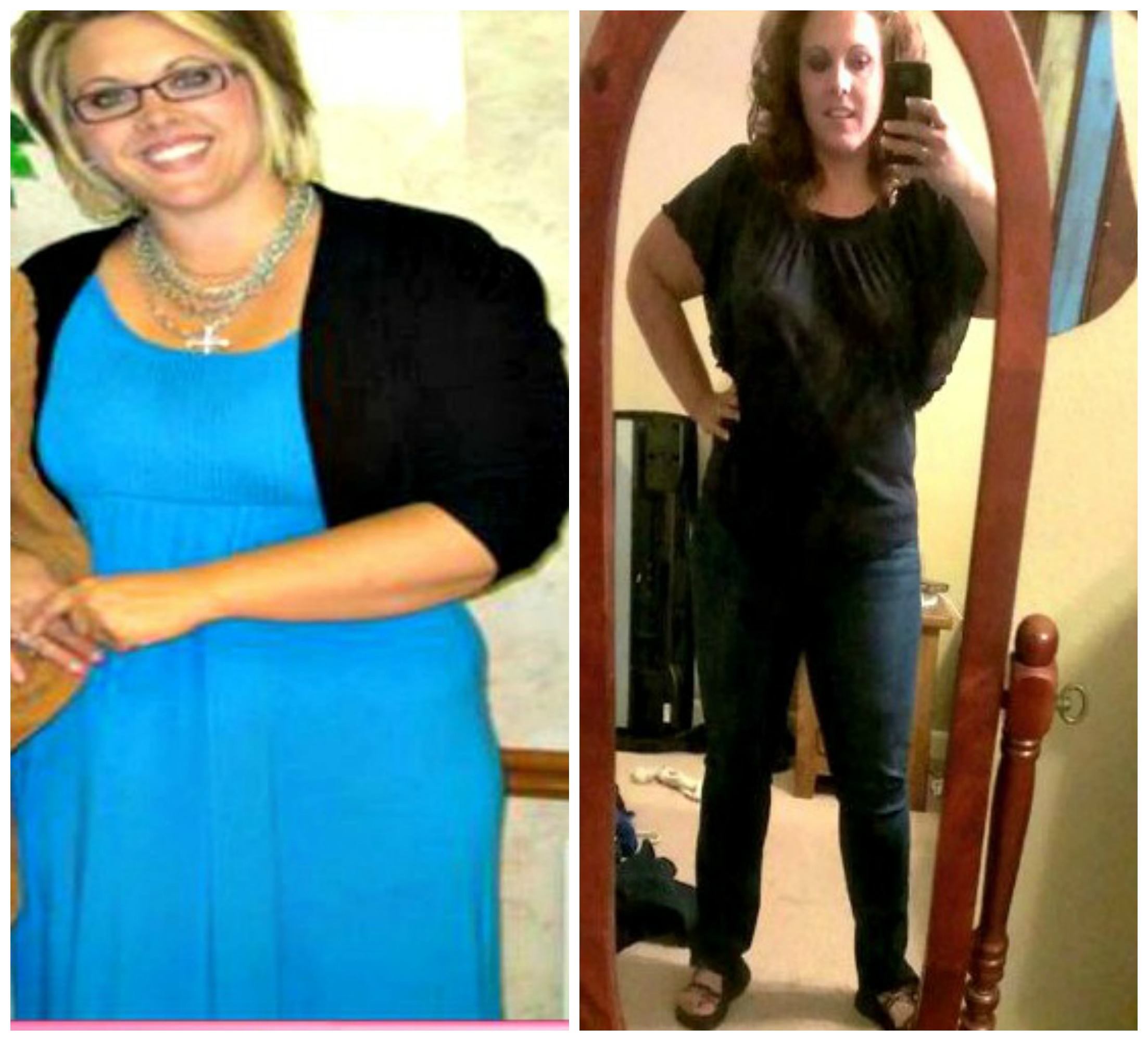
by Trish Adams | May 21, 2015 | Binge Eating, Interviews/Guest Posts, Testimonials, The Journey
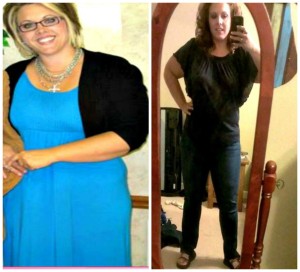 EM2WL: How long have you been on this journey?
EM2WL: How long have you been on this journey?
Mandie: I remember joining weight watchers during the summer between 5th and 6th grade. I always “wanted” to be healthy and fit. I honestly never knew how to accomplish that goal without severe restriction. I have been on this journey my entire life, the struggle has been very real.
How long have I been on the journey of eating more and moving more? I started that journey a few years ago. I was very unsure if it would really work. I approached it like any other diet at first because I honestly didn’t expect much to happen from it. Well, I guess I expected to lose a little weight and then gain a little weight because that seemed to be my life long pattern.
E: When did you first learn that you needed to eat more to reach your goals? What was your original response?
M: A couple of years ago I was going to a local gym where I was being taught to cardio my body into debilitation. I was participating in 30 day smoothie challenges, burpee challenges, plank challenges. I was working my body into injury and pain. The gym, of course, followed this type of pattern in their nutritional advice, (out of their scope of practice) so I was going on very few calories. I lost a little weight, but this formula for destruction wasn’t anything that I could do long term. It was still the restrict-binge cycle that I had always known. I was getting hurt constantly. I knew very little about how this all worked at the time. All I knew was eat as little as possible and move as much as I could. After an injury that put me out of the gym I started researching. I was tired. I was in pain. I was hungry. I wanted something more for my life. I started doing some research on how to rehab my injury. I started looking into how the body worked and studying how this magical thing called weight loss happens.
What I found blew my mind. I discovered this amazing thing called a total daily energy expenditure
(TDEE). This was the amount of calories I burned in a day (I had never really considered how many I burned in a day). I was eating around 1100 calories but was burning around 2500-3000 calories per day. I discovered that if I was in a coma the doctors would feed my around 1600 calories through a feeding tube.
 THIS blew my mind! How could I call myself healthy if I was eating less during my very busy life than a doctor would feed me in a coma. I, like most people, have been lied to by our culture that a woman eating anything over 1500 calories would gain weight at a rapid pace. Women believe this lie because we “think” we see this happening but what we really see is a perpetual cycle of starve-binge. We go on this crazy diets of 1200 calories and lose some weight, but somewhere along the way our bodies kick into survival mode and we start eating. We eat large amounts of calories trying to make up for our starvation time. We end up gaining our weight back and giving up… until we look in the mirror and decide we hate ourselves again and start the cycle all over.
THIS blew my mind! How could I call myself healthy if I was eating less during my very busy life than a doctor would feed me in a coma. I, like most people, have been lied to by our culture that a woman eating anything over 1500 calories would gain weight at a rapid pace. Women believe this lie because we “think” we see this happening but what we really see is a perpetual cycle of starve-binge. We go on this crazy diets of 1200 calories and lose some weight, but somewhere along the way our bodies kick into survival mode and we start eating. We eat large amounts of calories trying to make up for our starvation time. We end up gaining our weight back and giving up… until we look in the mirror and decide we hate ourselves again and start the cycle all over.
I decided to start trying to eat more consistent calories. I started this while trying to rehab a back injury so my start was scary. I gained approx. 13 lbs.. I was not able to do much moving at the time. I look back and giggle because basically I was just “eating more”. I backed off after several months and just ate at my TDEE for a very long time. I have to say though, allowing myself to just eat without the guilt and shame that I usually felt was a welcomed break. Along the way my back finally allowed me to start in on the weights and that is when great things started happening. I finally saw the promised land. I KNEW this was going to work. I KNEW I could do this forever. Eat. Lift. Repeat. YES PLEASE!
Somewhere during the process I also stopped looking at my body as “how small can I get” and I
started thinking “how awesome can I become in my performance”. I can not express how much that small mental switch has altered my life for the better.
E: How did others around you act about your decision to discard the usual low cal methods for weight loss?
M: I am actually laughing as I read this question. Everybody thought I was insane. I was told “you can’t have your cake and eat it too”. To that comment I now say.. “Actually I can”..
E: How did your body react to the initial increase in cals?
M: For women in our society we are taught to be hungry. We are taught it is a virtue to allow yourself starvation. I was no different. I had been on diets my entire life along with binge eating issues. I had been diagnosed in 2005 with anorexia. I had been on the pendulum of torture FOREVER. My body welcomed the break. I found it interesting that all it took was a shift in my mental status for me to be able to eat. I gained the approx. 13 lbs. before I decided to track and eat at my TDEE. My goal was obviously not to gain weight.
E: Did your family notice or comment on any changes once you upped your calories for a period of time?
 M: My husband was my biggest supporter. I think if my body had never changed he would have still
M: My husband was my biggest supporter. I think if my body had never changed he would have still
kept encouraging this lifestyle for me. Mentally I was at the best place I had ever been. Learning to accept myself enough to allow food in my life, even though I wasn’t at our cultures deemed size. That is a victory for most women. He loved my new found confidence and self worth. There were a few time that I would question myself and he would state very passionately to me “Eat The Food. Lift The Things.” <swoon>
He’s pretty great.
E: Can you describe your typical workout schedule prior to you learning to nourish your body and today?
M: I am laughing again. Oh the torture. I always believed that working out was suppose to be painful. I had that crazy belief that throwing up meant something good. I have done many different workout schedules but they were always inconsistent. I remember several times starting off on my bike for a good ride and having to turn around and come home because I was dizzy. I thought that was normal. I should have just grabbed a snickers.
I also remember the lowest point for me was around the time I was diagnosed with anorexia, I had made a decision to not workout because it caused me to get hungry. This makes me so sad now.
My workout schedule ran with how many calories I was allowing in my body because that determined if I got dizzy or blacked out. I didn’t want to eat enough to get through a full workout.. That would make me fat or fatter, depending on what season of life it was.
 E: As a busy mom of 5, how do you manage to stay on track with your nutrition and fitness? Any tips you can share with our followers?
E: As a busy mom of 5, how do you manage to stay on track with your nutrition and fitness? Any tips you can share with our followers?
M: Put yourself on the list. I wake up in the mornings and mentally go over my day, it is my informal to-do list. I make sure I am on that list. When I go buy groceries I no longer just ask my kids and husband what they would like. I buy the things I love to eat too. I put it in the budget. I am now worth being in our grocery budget. Crazy thing happened when I started buying healthier food. My kids started eating it.
I talk to a lot of moms who don’t have time for fitness or nutrition, or so they say. People think I am
crazy (or horrible) when I ask them “what if your child only did 2 activities instead of 4.” So that they can have a mother who gets to workout and focus a little time on her. There really is only so much time in a day and it is up to us to organize our lives in such a way that we are on the list of things to do for our families.
I do not think mothers see how important their own health is to their family. We are teaching our
children how to eat, how to move and how to treat themselves by our actions. When I realized that… it was huge to me.
E: What is the best way for our the EM2WL fam to get in touch or follow your journey ?
M: I usually hang out in my little community on Facebook called Women Are Hungry. Like most people I love to put my food and sweaty workout pictures up on Instagram so you will find me there as well. I love talking to to women about all things fitness, body image and habit changes so please feel free to hit me up!
I talk to so many women who are afraid to eat. I think when women realize that eating consistent
calories is so much better than the diet cycle:
 Day 1. fat and I need to lose weight
Day 1. fat and I need to lose weight
Day 2. I will eat only 1100 calories.
Day 3. I am awesome.
Day 4. I am hungry but will make it.
Day 5. I will just eat a little extra today
Day 6. WHERE IS THE FOOD.
Day 7. Eat ALL the food. Screw it.
The thing I find the most insane about this journey is that I haven’t gained any weight in over a year. I have spent my life gaining weight ( and losing and gaining and losing). I feel in control. I spent many years thinking weight loss was magic. It isn’t magic it’s science. I still have fat to shed and muscle to gain, but the great part about that is I know how to do it. I am no longer
on a time frame with my fitness and nutrition. It is just what I do. I no longer have an end
date. I don’t have a perfect body. I don’t have 12% body fat, however my imperfect body is
exactly where I want it to be right now.
Slow and steady is where long term success happens.

by | May 6, 2015 | Binge Eating, Increasing calories
If you are like most people, you have probably lived through this cycle at least once, but even more likely, you have lived it over and over: You wake up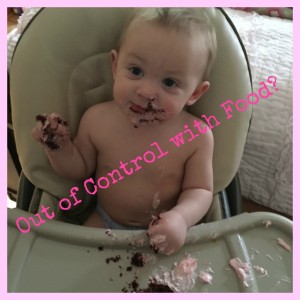 one day, go to get ready for work, pull on your favorite pants and can’t get them buttoned. Well, you can, but let’s just say, it’s not pretty! Can you say muffin top?? You vow right then and there to start your “diet” again. No more fast food, no more chips, no more cheese, no more cookies, no more pizza, no more than 1,200 calories a day. In fact, you are so serious, you are even going to cut out chocolate *gasp*.
one day, go to get ready for work, pull on your favorite pants and can’t get them buttoned. Well, you can, but let’s just say, it’s not pretty! Can you say muffin top?? You vow right then and there to start your “diet” again. No more fast food, no more chips, no more cheese, no more cookies, no more pizza, no more than 1,200 calories a day. In fact, you are so serious, you are even going to cut out chocolate *gasp*.
You wake up early the next morning and make an egg white omelet with spinach (hold the cheese) portion out your carrot sticks and cherry tomatoes for lunch, and you head out for a jog. This time, you are so committed to this new lifestyle that you even sign up take a high impact step aerobics class after work, just to burn off some more calories. If you can keep your food calories at 1,200, and then burn off 600 calories in that one hour aerobics class, well that knocks your net calorie intake to 600 for the day. Then, add in the burn from your morning jog and surely the pounds will just fly off you! Score!!
Well, your new “diet” goes well for a day or two, maybe even a week, but then the cravings begin… Soon they become all encompassing. Every waking moment is spent thinking about those precious 1,200 calories, and how you are going to allocate them to survive another day. You begin to dream about food 24/7. You feel like throwing in the towel, but no … you stand strong. For a while. Then soon, everything crumbles. As you are driving home from work you pull into the closest drive-thru and order enough food for a family of four. Two meals are gone by the time you get home, and the other two follow shortly thereafter.
 The next day continues in much the same way. I mean, you already blew your diet, so what is the point in forcing yourself to eat egg whites, spinach and carrot sticks today? You skip the morning jog and hop in the car and head off to Dunkin Donuts. The box of 6 donuts doesn’t even live to make it to the office…
The next day continues in much the same way. I mean, you already blew your diet, so what is the point in forcing yourself to eat egg whites, spinach and carrot sticks today? You skip the morning jog and hop in the car and head off to Dunkin Donuts. The box of 6 donuts doesn’t even live to make it to the office…
So, these binges may be different for every person. They may last for a day, a week, or even longer. They may involve fast food and donuts, or maybe peanut M&Ms and pizza. The outcomes may vary widely, but the causes are probably strikingly similar, and they almost always will involve restriction….
The good news is, there is something we can do to help control or even eliminate these binge cycles. The even better news is that these issues are addressed by some of the core beliefs of Eat More 2 Weigh Less.
The primary cause for binging involves restriction … restriction of both calories and specific foods.
When we start a new diet, we often start by dropping our calories to a rock-bottom level. I mean, the less we eat, the faster we will lose, no? This can 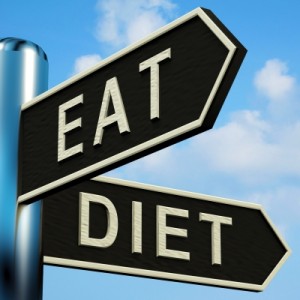 be a true recipe for disaster. Dropping your calories too low, and taking an overly aggressive cut, will result in cravings that will soon become overpowering. You can use willpower for a while to overcome these feelings, but eventually your willpower will run out and these cravings will win. Those cravings are much like a slingshot. You can use willpower to avoid the temptation to eat for just so long (as the slingshot is pulled back further and further), but once it gets to maximum tension, it’s all over… The rock is propelled through the air, and then it’s just you and the fridge. And, trust me, it won’t be pretty!
be a true recipe for disaster. Dropping your calories too low, and taking an overly aggressive cut, will result in cravings that will soon become overpowering. You can use willpower for a while to overcome these feelings, but eventually your willpower will run out and these cravings will win. Those cravings are much like a slingshot. You can use willpower to avoid the temptation to eat for just so long (as the slingshot is pulled back further and further), but once it gets to maximum tension, it’s all over… The rock is propelled through the air, and then it’s just you and the fridge. And, trust me, it won’t be pretty!
Overly restricting your caloric intake and taking too steep of a deficit is one of the quickest ways to cause a binge. Your body (and brain) will fight against you tooth and nail. The good news is that Eat More 2 Weigh Less addresses this issue by promoting that we eat at only a small deficit from our TDEE. By keeping this deficit small, it is often possible to reduce or even eliminate some of these cravings that result in binges.
So what to do if you are experiencing these binge cycles as the result of eating too little? Find out what your TDEE is and simply gradually start increasing your intake until you are eating either at or slightly below your TDEE, based on your goals. Most people will find that once they are adequately fueling their bodies and eating closer to maintenance calories that they feel more in control. They feel satiated and no longer have that constant gnawing in their bellies that reminds them that they are starving (literally) 24/7.
Another common cause for binges involves restricting certain foods or even entire food groups. Now certainly if you have a medical reason to avoid certain foods, then by all means, do what you need to do for your health. But, if you are eliminating specific foods from your diet simply because you feel as though they are “off limits” or “bad,” then you may want to reconsider. When you completely eliminate certain foods from your diet because you think they are “bad,” then over time the desire to eat these foods will become overwhelming.
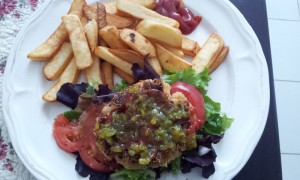 With EM2WL, no foods are considered to be “off limits.” In fact, we encourage everyone to enjoy eating a well-balanced diet, complete with treats! Now, is this an invitation to eat cookies and ice cream for breakfast, lunch and dinner, as long as it is within your calorie goals? Absolutely not. EM2WL recommends that everyone monitor their macros (using a tool like My Fitness Pal) and set them at 40% Carbs/30% Protein/ 30% Fats. Eating healthfully and concentrating on eating whole, unprocessed foods is certainly going to be best for one’s health, but that does not mean that there is no room for treats! Concentrate on hitting that 30% protein macro each and every day. Make that a priority. If you do that, the other two macros will often just naturally fall into place. Once that protein macro is met, if there is room for waffles, a donut, dinner out at your favorite restaurant, or chocolate, then enjoy! As long as it fits within your caloric and macro goals for the day, it’s all good! You will most likely find that once certain foods are no longer considered “off limits”, and you are able to enjoy them in moderation that those intense cravings will subside… Remember, the fastest way to feel like you absolutely have to have something is to be told that you cannot have it… (Think of a little toddler being told to not absolutely not touch something. We all know how that ends up! :- )
With EM2WL, no foods are considered to be “off limits.” In fact, we encourage everyone to enjoy eating a well-balanced diet, complete with treats! Now, is this an invitation to eat cookies and ice cream for breakfast, lunch and dinner, as long as it is within your calorie goals? Absolutely not. EM2WL recommends that everyone monitor their macros (using a tool like My Fitness Pal) and set them at 40% Carbs/30% Protein/ 30% Fats. Eating healthfully and concentrating on eating whole, unprocessed foods is certainly going to be best for one’s health, but that does not mean that there is no room for treats! Concentrate on hitting that 30% protein macro each and every day. Make that a priority. If you do that, the other two macros will often just naturally fall into place. Once that protein macro is met, if there is room for waffles, a donut, dinner out at your favorite restaurant, or chocolate, then enjoy! As long as it fits within your caloric and macro goals for the day, it’s all good! You will most likely find that once certain foods are no longer considered “off limits”, and you are able to enjoy them in moderation that those intense cravings will subside… Remember, the fastest way to feel like you absolutely have to have something is to be told that you cannot have it… (Think of a little toddler being told to not absolutely not touch something. We all know how that ends up! :- )
If you are one of those people that feels as though if you have one bite of a food that you have previously considered off limits that you will lose all control and have it turn into an all-out binge, remember this: once you are eating closer to your TDEE or maintenance calories, those feelings will not be so strong. If you try to enjoy one cookie or a piece of chocolate while eating at a steep caloric deficit, then yes, it will be very hard to resist the temptation to eat more, simply because your body is craving more calories. However, if you are properly fueling your body and eating at only a small deficit, then those urges will not be as strong, because you will not be ravenously hungry. Adding back in previously prohibited foods will be much easier once you are well on your way to eating more. Adding them back in while still restricting calories may be a like playing with fire…
If you are still feeling a bit out of control, and still not “safe” around those tempting foods, here are a few things to try that may be helpful:
○ Don’t keep those tempting foods in the house. Yes, it’s okay to have them (in moderation and if they fit within your caloric and macro goals), but it may be necessary to not have them in your kitchen cabinet. If you are going to splurge on a treat, try eating it at a restaurant (or an ice cream or frozen yogurt parlor). Order your serving, enjoy, and then leave … not taking the temptation with you.
○ If you do bring foods into your home and fear losing control with them late at night, only buy a small quantity, and enjoy it in its entirety, not leaving any leftovers for later temptation. If you want to indulge in some chocolate, pick out the best quality in a size that fits your goals and enjoy it guilt-free. By limiting the package size, once it’s gone, it’s gone…
○ Try finding “healthier” alternatives to your trigger foods. If it’s ice cream you crave, try experimenting with other dessert options. My personal favorite is one cup of Greek yogurt with ½ scoop protein powder stirred in (I love peanut butter cookie flavored Protizyme) topped with one cup frozen berries, slivered almonds (or try pecans or walnuts) and a spoonful of dark chocolate chips. It makes a huge bowl and the fiber in the berries will keep you full, as will the protein (from both the yogurt and the protein powder) and it even helps you reach that protein macro!
If it’s pizza that you are craving, maybe try making your own. You can buy whole wheat pizza dough in many stores (check the deli or freezer  sections) and top it with flavorful cheeses (parmesan and feta are great choices) and grilled vegetables (think onions, asparagus, mushrooms, yellow or zucchini squash). Add some meat if you like and enjoy! By using high quality, flavorful cheeses, you can use less and get a huge flavor punch for less calories. The veggies are very filling and will help you reach that fiber macro. Plus, you get to eat pizza!
sections) and top it with flavorful cheeses (parmesan and feta are great choices) and grilled vegetables (think onions, asparagus, mushrooms, yellow or zucchini squash). Add some meat if you like and enjoy! By using high quality, flavorful cheeses, you can use less and get a huge flavor punch for less calories. The veggies are very filling and will help you reach that fiber macro. Plus, you get to eat pizza!
Craving a sandwich? Try replacing the mayo with hummus or smashed avocado with a touch of lemon and salt. Want some chips? Try sweet potato chips or make your own kale chips in the oven with some olive oil and sea salt. Standing at the check-out line at the grocery store and feel like grabbing a candy bar? Reach for a protein bar instead.
You can have tons of yummy foods in your diet, just try to make some small tweaks to make those choices a bit healthier. You may find that you can satisfy those cravings while at the same time you are able to reach your macro goals.
Binges are generally caused by restriction. If you can avoid restriction, you can often stop those binges.
○ Overly restricting your caloric intake and taking too steep of a deficit is one of the quickest ways to cause a binge. Eat closer to your TDEE or maintenance calories and you may find that those urges are greatly decreased. On the other hand, starve your body and those cravings will become so strong that eventually no amount of willpower will be able to overcome them.
○ Restricting or eliminating specific foods or food groups can tend to make them even more enticing. Once you are eating closer to your TDEE, allow yourself to indulge on a previously “off limits” treat (in moderation) and work them into your daily or weekly goals. Just knowing that you can have those treats somehow takes away some of their “power”….
If you think you have an eating disorder, then certainly seek professional counseling, but if you are just stuck in a rut of repeated “falling off the wagon” caused by severe caloric restriction, then perhaps some of these tips will work for you and help you gain some control over your life and your food.

by EM2WL | Jul 29, 2014 | Binge Eating, Interviews/Guest Posts, Intuitive Eating, Nutrition

I recently heard dietician/nutritionist, Leslie Schilling, speak at the NSCA National Conference. She instantly wooed me with her Southern drawl, love of food, and “anti-diet” approach (a dietician against diets?! What’s not to love?). Of course, I commenced to immediate stalking, and cornered her for an interview ;) ~Kiki
EM2WL: Your session at the conference “When Diets Don’t Work” focused on Binge Eating Disorder (BED). Can you explain to our readers what BED is?
Leslie: A diet, whether it is the first or fiftieth, could be the trigger to a life-altering or even life-threatening eating disorder. According to the National Eating Disorders Association, these illnesses can affect people of any race, age, sex, or size. Last year, the most common yet under recognized disorder received an official diagnosis code. Now those suffering with BED can no longer be overlooked. BED is associated with the following signs: recurrent binging (once a week for more than 3 months), eating larger than normal amounts of food in a short period of time, and lack of control during the binge episode. According to the Binge Eating Disorder Association, BED may affect 3.5% of women, 2% of men, and as many as 40% of all those seeking weight loss treatments.
EM2WL: Other than lack of purging/excessive exercise, what separates BED from Bulimia and Anorexia?
Leslie: There is no compensatory behavior like over exercising, restricting or “getting rid” of food (purging in any way).
EM2WL: I wonder if it is possible to have this disorder and not know it. A lot of people refer to “cheat meals,” justifying overeating on the weekends after “being good” all week. Does this type of diet mentality have any bearings on developing BED?
Leslie: Yes, it is possible to have BED and not realize it. Dieting over the years, as well as a common culture of “diet-mentality,” may mask an underlying problem. Many of us overeat from time to time, and even eat when we are not hungry. Those with binge eating disorder, however, eat for reasons not always associated with hunger. For example, people suffering from BED may use food to reward themselves, or to escape emotions associated with grief or anxiety, stressful situations, anger, hurtful memories or even past traumas.
My philosophy about “cheat meals” is simple. If what you’re doing requires that you “cheat,” I don’t believe it’s a sustainable or healthy. You could absolutely be eating better than you once did, but perspective matters. I believe in an 80/20 approach which I define as eating whole and low-ingredient foods most of the time and comfortably blending it with pleasurable foods that may or may not have a high nutritional value. Like, I have this thing with cupcakes…
My philosophy about “cheat meals” is simple. If what you’re doing requires that you “cheat,” I don’t believe it’s a sustainable or healthy.
EM2WL: Would you consider an overindulgence, say eating an 2 or 3 servings of a favorite dessert, a binge? How can we distinguish between an overindulgence v a binge?
Leslie: It’s possible I could eat two cupcakes here and there. I likely over-indulged and won’t do that again for a long time. A binge may look like 4, 6, or even a dozen cupcakes but it really depends on the person and the motivation.
Here’s an example—If I eat an extra cupcake because Aunt Betty makes amazing strawberry cupcakes, it may be a simple indulgence. If I’m eating 2, 4, etc.. of Aunt Betty’s cupcakes because my boss said something horrible to me—I’m “using” food and therefore, potentially binging.
EM2WL: The term ’emotional eating’ is used quite a bit with regard to challenges faced when trying to lose weight. Is this just another label for BED?
Leslie: Normal eaters sometimes eat for emotional reasons vs. physiological hunger. However, when you find yourself eating for reasons other than hunger frequently, it’s possible there could be some form of disordered eating going on, like BED.
If someone is over “using” food, it’s possible to teach them the tools to recognize and redirect those behaviors. Once they improve those behaviors, it’s very likely that weight loss becomes a side-effect.
EM2WL: You mentioned that if the shame-based approach worked, that the problem might not be as widespread. How does the media, trainers, friends, or parents contribute to the shame-based approach to fat loss? And how does that play into BED?
Leslie: Many of us who work in the field of disordered eating say “if shame worked, no one would have a weight issue.” Making someone feel bad about themselves is NEVER productive. Our “war” on obesity has become a war against people, real people, like you and me, with real life problems. I like to think you catch more flies with honey. Being caring and non-judgmental opens the door to sustainable change. Here’s one of my favorite quotes.
Nobody really gets anywhere “shouldn’t’” on themselves. When we feel the pressure to change things like our bodies, our diets or exercise routine, it’s important that trainers, dietitians, parents, health professionals, etc… use an approach that moves someone towards making healthy decisions for themselves. I rarely support someone’s goal of “weight loss.” I discuss what’s going on with their food, lack of food, over “use” of food, and help them set goals that promote lasting healthy behaviors. If someone is over “using” food, it’s possible to teach them the tools to recognize and redirect those behaviors. Once they improve those behaviors, it’s very likely that weight loss becomes a side-effect.
EM2WL: If someone suspects they might have BED is there anything they can do on their own to treat the disorder?
Leslie: It’s unlikely, yet not impossible. It’s about the food and NOT about the food at the same time. A successful team usually includes an experienced mental health professional along with an experienced dietitian (one who works with BED/emotional eating).
If you’re wondering if you may need a little help, you can absolutely start by helping yourself. Keeping a food journal (no calories, numbers, etc) to record when you eat, what you eat and how you’re feeling (am I hungry, angry, lonely, tired?). An individual non-judgmental investigation of how you’re using food can provide tremendous insight.
EM2WL: As a dietitian, what do you feel the biggest flaw is in the “eat less, workout more” philosophy?
Leslie: If it were as simple as eat less, work out more, I think most every person on the planet would have mastered the food and weight thing by now. We often assume it’s all about energy in and energy out. It’s not really when you think about all the other factors that influence our body weight & eating—emotions, endocrine issues, body types, dieting history, fitness levels, and so on…
I love giving this example. Say you have a 50 calorie snack and a 150 calorie snack. If you’re simply eating based on a quantity (calorie) approach, it’s very possible you’ll pick the fat-free, sugar-free chemical soufflé. If you eat based on a quality approach, you’re more likely to pick the higher energy choice—almonds—ingredient: almonds.

EM2WL: You have a new dinner menu service launching soon, deets please!! What awesomeness should we expect from Your Supper Solution?
Leslie: I’m incredibly excited about this launch! Earlier this year I’d enrolled in a business development course because I needed direction for my next steps as an entrepreneur. As you know, I’m a registered dietitian/nutritionist but I was stuck. This desire to do something that could positively impact people on a larger scale was really eating at me. I didn’t know if I needed to focus on expanding my private practice, speaking engagements, write a book, or what. The lack of clarity was incredibly frustrating.
As I was doing my homework (which I loved because I’m a total geek), it came to me. I rock planning a menu like nobody’s business and I realized that planning has been a major part of what I’ve been helping people with for the last 10 years.
Many people can cook, follow a recipe and shop but most HATE the planning. So, I’ve created Your Supper Solution—an online monthly membership service that delivers weekly dinner menus. It’s a balanced, back-to-basics, real food approach to getting supper solved! Menus roll out August 1st! Here’s a quick video about it.
EM2WL: Sweet! You know I’m already on the pre-launch list, lol. Where else can our readers read/see/hear more from you?
Instagram: http://instagram.com/leslieschilling
Facebook: https://www.facebook.com/NutritionLeslie
Twitter: https://twitter.com/NutritionLeslie
Pinterest: http://www.pinterest.com/leslieschilling/
Meal Planning Website: www.yoursuppersolution.com
Memphis-based Private Practice Website: www.schillingnutrition.com

Leslie Schilling
Leslie is a master’s level, registered, and licensed dietitian/nutritionist who specializes in wellness, disordered eating, sports nutrition, and the prevention of chronic dieting. She received her Bachelor of Science and Master’s degrees from Appalachian State University in NC. Leslie owns Schilling Nutrition Therapy, LLC, a Memphis-based nutrition counseling practice, and is the creator of Your Supper Solution.
She is a member of Sport, Cardiovascular and Wellness Nutrition (SCAN), Behavioral Health Nutrition (BHN), Nutrition Entrepreneurs (NE) Practice Groups of the Academy of Nutrition and Dietetics (AND), the National Strength & Conditioning Association (NSCA), the Eating Disorders Coalition of Tennessee (EDCT), and The National Speakers Association (NSA).
Leslie has served as an adjunct instructor in the Graduate Nutrition Program at the University of Memphis. She has also been invited to provide her humorous, down-to-Earth nutrition programs and presentations to groups and professionals across the nation. In addition, she writes for local media, professional, and consumer publications. Whether it is through appearing on a television show, speaking to a crowd, or writing, Leslie inspires those she encounters to get back-to-the-basics with food and make self-care a priority through planning.

 Do you alternate between “perfect” eating and stuffing your face? Not sure how you can ever accomplish your goals, when you don’t wanna give up your fave foods? Always feeling like it’s all or nothing (chicken breast and broccoli OR chicken fingers and cheesecake?)
Do you alternate between “perfect” eating and stuffing your face? Not sure how you can ever accomplish your goals, when you don’t wanna give up your fave foods? Always feeling like it’s all or nothing (chicken breast and broccoli OR chicken fingers and cheesecake?)
















Recent Comments